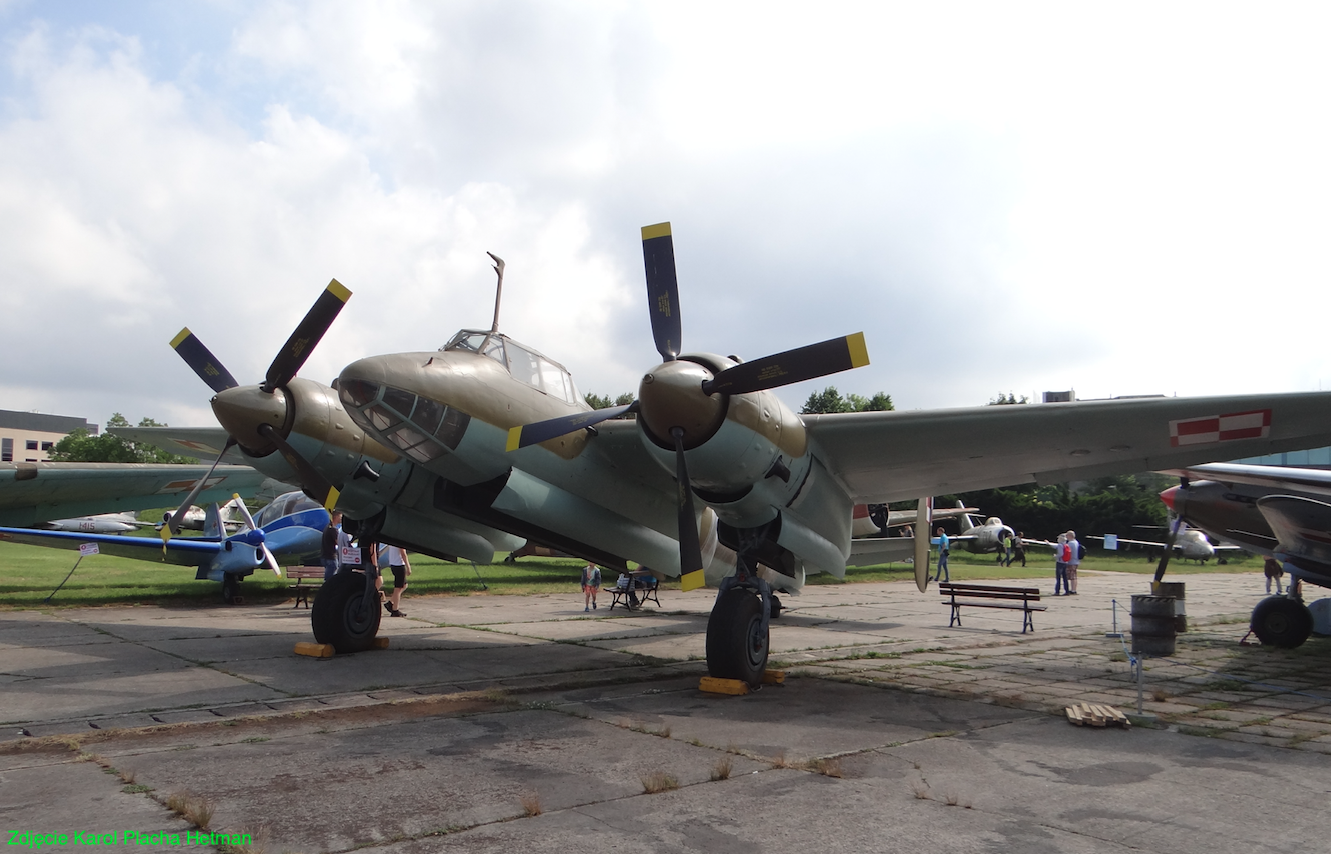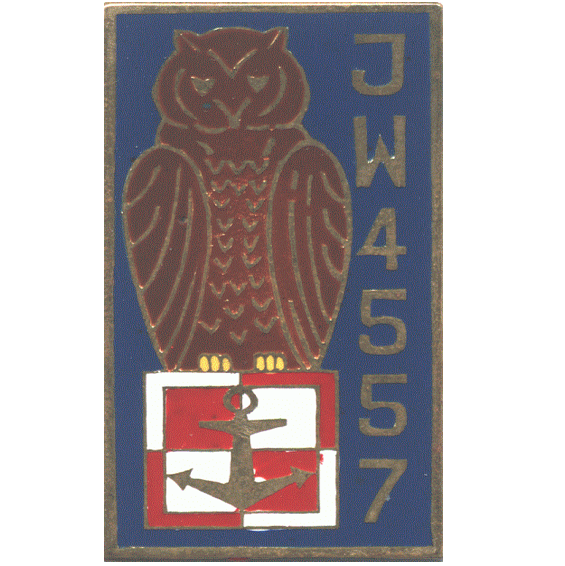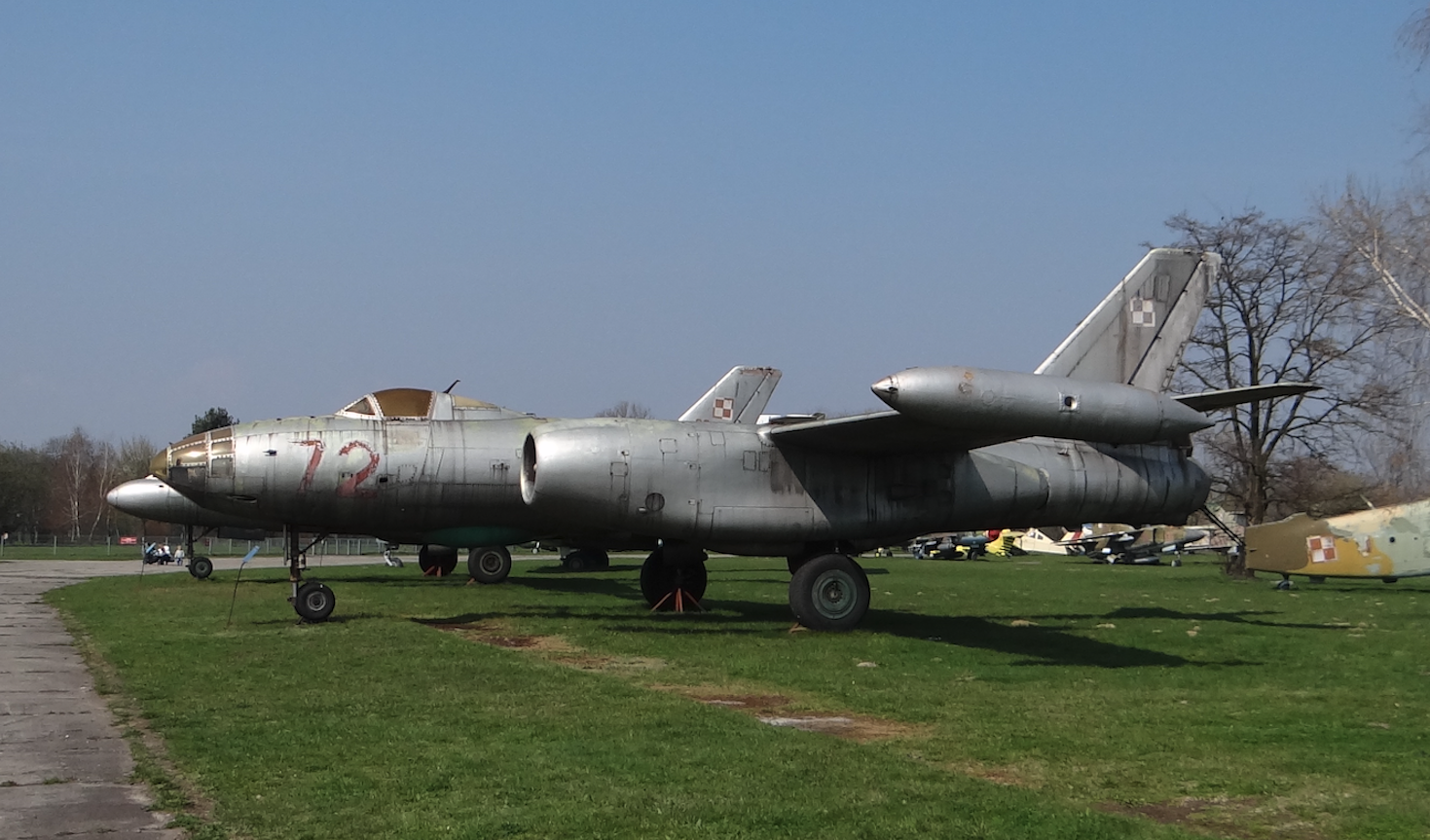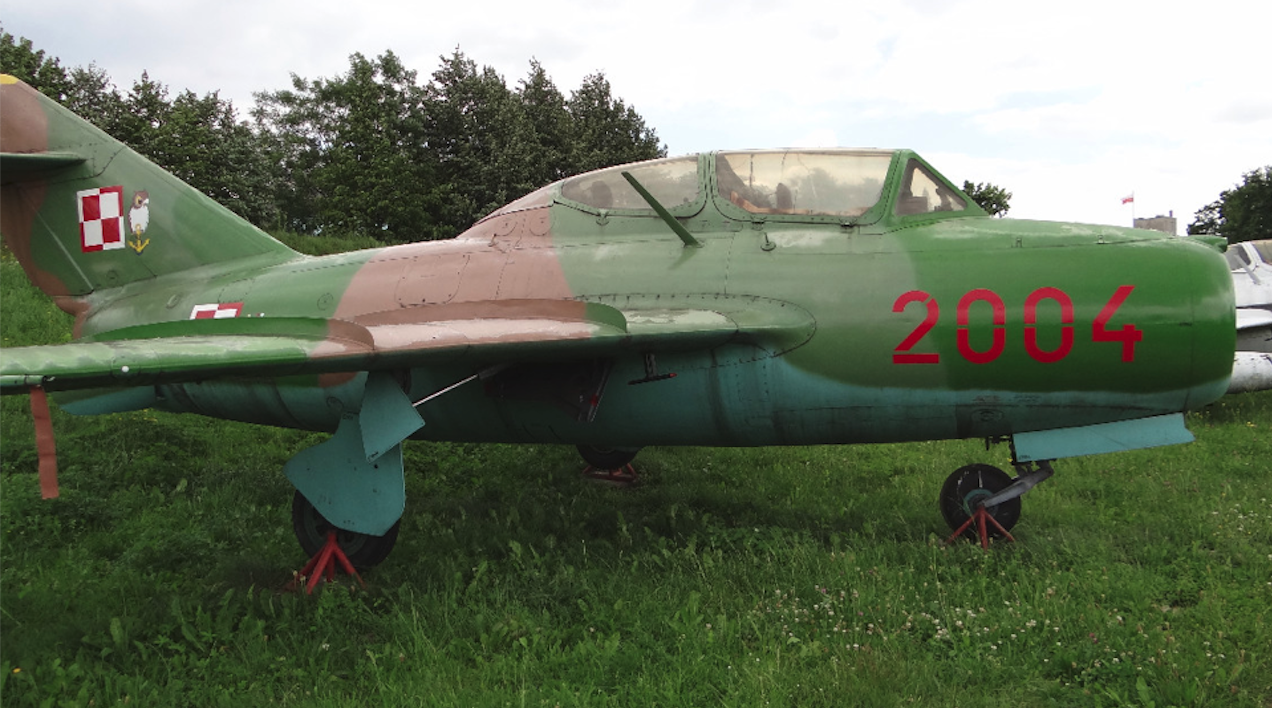Siemirowice 2011-03-12
15th Independent Naval Reconnaissance Aviation Squadron.
1955-1988
Siemirowice Airport.


The 15th Independent Reconnaissance Aviation Squadron was a Polish aviation unit performing tasks for the Polish Navy and Polish Military Aviation. The unit took its aviation traditions from the rich history of Polish Naval Aviation from the period of the Second Polish Republic.
We must remember that since 1944, Poland was a dependent country of the CCCP, which did not allow the reactivation of any Polish air unit, defeated by the Germanic plague during the defensive war in 1939. Moreover, they did not allow any Polish air unit created during World War II to be based in the West. Especially since World War II was started jointly by the Germanic and Soviet armies. Another thing that the reader should remember was the fact that the dictator Joseph Stalin was only a land leader. He had little understanding of aviation and no knowledge of the sea at all. So let's not be surprised that throughout the entire period of the existence of the CCCP (union of Soviet socialist republics, written CCCP, and in the Polish translation - cep cepa cepem pogonia), their naval aviation and navy were weak. Therefore, Polish Naval Aviation was slowly reborn and forever did not fit into the system established in the Kremlin.
In 1948, the first aviation squadron of the Navy was organized. It was formed at the Wicko Morskie Airport, which was far from the main economic centers on the Polish Coast.
In 1949, the 30th Air Regiment of the Polish Navy was formed on the basis of this squadron. This happened on the basis of the Order of the Minister of National Defense No. 0235/Org of November 22, 1949. The 30th Naval Aviation Regiment was organized as JW. 5576, according to post No. 35/118. The place of stationing was the Słupsk Airport, which the Soviets returned to Poland five years after the end of the war. The regiment began operations on March 25, 1950, and had only piston-engined war-production aircraft in its inventory. These include Il-2 M3, Jak-9, Pe-2 FT, Tu-2, Po-2. Bomber and reconnaissance planes were stationed mainly at the Słupsk Airport, and fighter planes at the Wicko Morskie Airport. The regiment was primarily involved in training young pilots and naval aviators. Later, they began to prepare for combat tasks. In 1950, the 30th PL MW received a banner funded by the society of the City of Katowice.
On May 3, 1951, after a year of stay in Słupsk, the 30th PL MW was moved to Babie Doły Airport. The equipment at the Regiment's disposal improved slightly, but the number of types increased, which was not conducive to smooth operation and renovation. The regiment is armed with the following aircraft: Il-2, Il-10, Jak-9, Jak-11, Tu-2, Pe-2, An-2, Po-2.
In 1952, the 30th Naval Aviation Regiment was transferred to the Gdańsk Wrzeszcz Airport. Gdańsk Wrzeszcz Airport has not existed for many years, and the last traces of it disappeared in 2005. At that time, the Regiment was the only Polish aviation unit of the Navy. The regiment operated only on the eastern part of the Polish coast, because the western part was "defended" by Soviet units. The Regiment consisted of three squadrons: fighter, attack and reconnaissance. (According to other sources; two fighter-assault and one long-range reconnaissance). The reconnaissance squadron operated Tu-2 aircraft. The dynamic development of Polish Military Aviation, caused by the war in Korea, practically bypassed the Polish Naval Aviation. Only the second half of the 50 years brought changes.
15th Independent Reconnaissance Aviation Squadron. 1955 year.
In 1955, the Reconnaissance Squadron was separated from the 30th PL MW and adopted the name - 15th Independent Reconnaissance Squadron, Unit 4557. This designation was quickly changed to the 15th Independent Reconnaissance Aviation Squadron. All this happened on the basis of the Order of September 10, 1955. These changes were mainly caused by the adoption of new Il-28 and Il-28 R aircraft with turbojet propulsion. The creation of the new 15th Independent Military Reconnaissance Aviation Squadron (15 SELR MW) took over one year. Its first commander was naval captain-pilot Hilary Zarucki. He previously served as the commander of the 16th Air Liaison Squadron of the Polish Navy. During this period (from October 1955), designated flying and technical staff were already undergoing training for new aircraft. The training took place at the 15th Bomber Aviation Division at the airport in Modlin. The assistant commander of the 2nd Squadron in the 35th PLB was appointed as the main instructor - Capt. pil. Edmund Jałocha. In December 1955, after completing theoretical training, the Squadron's staff began flying UIł-28 training and combat aircraft. The honor of making the first independent flight on a new type of aircraft, on December 16, 1955, was given to the crew: naval captain pilot Hilary Zarucki, naval lieutenant navigator Tadeusz Pawlaczek and gunner/radio operator navy lieutenant Henryk Kuza.
The previously used Tupolev Tu-2 aircraft were gradually transferred to the 19th Aviation Tow Squadron in Słupsk. In the fall of 1955, the last two planes were based.
In 1956, the 15th SELR (Independent Reconnaissance Aviation Squadron) was based at Siemirowice Airport. It was here, at the Siemirowice Airport, that the first Il-28 planes, part of the Squadron's equipment, landed. A year later (1957), the 30th PL MW from the Gdańsk Wrzeszcz Airport was transferred to the Siemirowice Airport and transformed into the 30th MW Assault Aviation Regiment (Jak-11 and Lim-2 aircraft). Gdańsk Wrzeszcz Airport has been closed.
In May 1956, the squadron's staff was trained on the reconnaissance variant of the Il-28 R and immediately transferred from Modlin to the airport in Babie Doły. Already on June 30, 1956, six planes of the Squadron participated in the parade over Gdynia on the occasion of the Sea and Navy Days.
Meanwhile, preparations for the formation of the 15th SELR MW have been completed. It was established on the basis of the order of the Chief of the General Staff of the Polish Army No. 0144/org of August 8, 1956. The squadron consisted of 113 military personnel and one civilian contract employee. Babie Doły was designated as the formation site and the town of Łebunia near Lębork, i.e. Siemirowice Airport, was designated as the base site. It was a new airport, built from scratch for the needs of Polish Navy Aviation. In the initial plans, the airport was to be occupied by Soviet planes. Initially, it was difficult to determine the name of the new base. In the first documents (as above), the name of the town Łebunia appears, later it was decided to use Cewice - the nearby seat of local authorities. In fact, the closest settlement to the airport is Siemirowice, where the first blocks of the military settlement (officers' and garrison's) were built. To this day, the military uses both names interchangeably, although the most famous is Siemirowice.
Siemirowice Airport was built by the Polish Army for one of the CCCP regiments based in Poland. However, the Soviets exchanged it for an airport located in the Western Territories of Poland.
Siemirowice Airport had a concrete RWY 2,000 m long and 60 m wide. 20 individual parking spaces were built for aircraft. In addition, there was an MPS warehouse with a railway siding, a technical warehouse, a battery room and a compressor room. The local garrison made it possible to secure the basing of a fighter aviation regiment with an airfield maintenance battalion and a blind landing squadron.
The Squadron's airborne base moved to Siemierowice (Cewice) on October 1, 1956. Already at the new location, by the end of the year, basic training in daytime flights and in difficult weather conditions was completed. The process of forming the unit was finally completed in mid-1957.

The structure of the 15th SELR was as follows: command, political section, headquarters, engineering and operational section and three aviation keys. The aircraft included: 2 Il-28, 3 Il-28 R, 1 UIł-28 and a liaison Po-2. The squadron was to perform tasks covering two areas of operations. The first of them included operational reconnaissance carried out in the period of preparation for the operation, while the second and basic task was to determine the grouping of enemy forces, the nature of its operations and the conditions that would enable the effective use of the forces and means of the Navy deep inside the group. As part of tactical reconnaissance, the squadron's crews were tasked with reconnaissance of specific objects at sea and in bases, combined with photographing them. This also included photographing the effectiveness of own fire weapons used against detected enemy objects.
Reconnaissance aviation performed these tasks using visual observation, photography and radar means. The introduction of Il-28 R reconnaissance aircraft with an on-board PSBN radar (operating range from 15 to 100 km) allowed the Squadron to perform reconnaissance in maritime areas in all weather conditions, regardless of the time of day. The tactical and technical capabilities of these aircraft allowed for reconnaissance within a radius of up to 950 tan, for three hours (taking into account a 20% fuel supply). Chō (Japanese: 町) – Japanese unit of length or area. As a unit of length, 1 chō is approximately 109.09 meters. 1 chō = 10 tan. The squadron's planes conducted daily reconnaissance operations along designated routes over the Baltic Sea. These were searches in the prescribed direction.
Interesting memories of one of the radio operator shooters come from this period. – “I had my first serious aviation adventure in the same year, during a night flight on the Il-28 R bomber. The take-off took place from the airport in Goleniów, and the task was to observe vessels in the area of the entrance to the Danish straits. The plane was led by Navy Lieutenant-Pilot Stefan Skubel, and the navigator was Navy Lieutenant Stanisław Olejkowicz. Somewhere near the straits, a lot of bright spots were visible on the screen of the PSBN-M radar sight, which the navigator interpreted as a large group of ships. In fact, they were lightning. After entering the cloud, the plane "lost all instruments" - the cabin became dark and the pilot could see nothing except a small magnetic compass. It was the result of the Il-28 R aircraft accidentally entering the center of the storm cloud, at an altitude of approximately 2,000 m, into a strong updraft.
However, the 15th Squadron was not to be the sole host of the Siemirowice garrison. By August 10, 1956, the organizational order of the commander of the Polish Navy No. 014/Org of May 13, 1956 ordered the 30th Polish Navy Aviation Regiment and the 50th Airfield Maintenance Battalion to be based at the same airport. The creation of living facilities for the staff and soldiers of the conscript service forced the expansion of the housing, commercial and recreational infrastructure. Nevertheless, serving in this "green garrison" far from larger urban centers was not easy. Even in the next decade, there were winters during which the base and the settlement were "cut off from the world", even for two days. At the same time, intensive training of the crews took place.
Unfortunately, the first year of the Squadron's operation also brought its first loss. On October 4, 1956, as a result of a failure of the oxygen system, during a training and combat flight at an altitude of 11,000 m, the navigator of the crew, naval second lieutenant, navigator Franciszek Dudek, lost consciousness. Despite a quick return to the airport, resuscitation efforts did not save the pilot's life.
In 1958, three years had passed since the beginning of operation of Il-28 aircraft in naval aviation. Unfortunately, another tragedy weighed on the good results of the flight training. On January 11, 1958, during a weather reconnaissance flight, the SIł-28 aircraft No. S-3 (U-3) collided with the ground. The entire crew died on the spot: instructor, pilot lieutenant commander Hilary Zarucki (commander of the Squadron), naval second lieutenant pilot Walenty Urbanowicz, and gunner Able Seaman Jan Czubiński.
On March 18, 1958, the position of unit commander was taken over by Navy Captain-Pilot Leon Jędrzejczyk. Fate also brought him a tragic end to his service. On March 18, 1959, exactly one year after assuming the duties of the Squadron Commander, Capt. mar. pil. Leon Jędrzejczyk, and with him Lt. Mar. navigation Aleksander Czyżykowski and the x-ray shooter. mar. Adam Bochenek, died as an aviator when their Il-28 R plane fell apart in the air after an overly energetic maneuver over their home airport. The duties of the unit commander were taken over by the current chief of staff, Capt. mar. diploma Czesław Głuszcz.
However, temporary problems did not stop the training. The unit's tasks included: detecting enemy ships and guiding ship strike groups to them, taking photos from the air, and finally towing anti-aircraft firing tubes from ships. In December 1959, the unit was put on permanent duty in the "MW Emergency Rescue Team", keeping one crew constantly ready to help ships in the Baltic Sea.
The level of training can be proven by the fact that the crew consisted of: 2nd Lt. mar. pil. Władysław Baron, second lieutenant mar. navigation Zenon Nowotczyński and professional petty officer Edmund Loroch received the pennant of the "Leading Naval Aviation Crew".
In 1959, a large air parade was organized once again on the occasion of the communist holiday. Il-28 bombers were also present. All units with these planes presented their bombers for the parade. On July 22, 1959, a large rhombus of 16 Il-28 aircraft and a column of five rhombuses of 4 aircraft each were presented. A total of 36 Il-28 aircraft were shown in the air.

Il-28 in naval aviation. 1960-1970 (15. SELR, 19. EH).
The increasing skills of the 15th SELR staff resulted in a shift in the burden of tasks performed. From 1961, all flights involving cooperation at sea began to be treated as tactical and combat, and from May to the end of October 1961, 70% of flights were performed over the sea. The quality of performed flights and reconnaissance was constantly increasing. All crews were cleared to fly at night, in difficult weather conditions. Crews increasingly cooperated with ships at sea (including the GDR Navy) and fighter-assault aviation.
In September 1961, one of the squadron's crews took part in the WL and OPL OK Reconnaissance Aviation competitions for the first time, which allowed them to gain new experience in reconnaissance flights for the benefit of land forces and other types of aviation, as well as combating ground targets.
In 1962, training of crews on Il-28 aircraft began for the Towing Squadron. In August 1962, both Siemirowice air units (operating from the Słupsk-Redzikowo airport) participated in bilateral exercises of allied fleets.
In 1964, steps were taken to increase photo-recognition capabilities. Successful photography trials were carried out using modern slit cameras, taking pictures at low altitude and high speed. Representatives of the then Aviation Inspectorate came to the Squadron to analyze and exchange experiences in the field of processing and photography on colored materials working in infrared and zone-spectral. There was also an exercise in cooperation with the Torpedo Boat Brigade and fighter and attack aviation in the scope of detecting and guiding own strike groups to detected ships.
There were also real combat flights aimed at detecting and recognizing electronic intelligence ships of NATO countries operating on the border of Polish territorial waters. Foreign planes were also encountered in the air, especially the Atlantic Bundesmarine, which was usually an opportunity to enrich each other's album of official photos. Among the exercises of this period, attention is paid to activities carried out in simulated conditions of the use of nuclear weapons, with particular emphasis on procedures for disinfecting people and equipment.
Air shows and parades added variety to the training rhythm. Particularly memorable were the celebrations of the Sea Day in 1965, when the crew, Lieutenant Commander and Pilot E. Jałocha, opened the air parade, leading a formation consisting of one Il-28, accompanied by four Iskras arrived from Radom. The Polish Navy's aviation also demonstrated the Il-28 "surface" and the Lim anchor, which was an attractive show of strength and training of the Polish Navy's aviation for the public. An extraordinary spectacle was the evening illumination of ships standing in the roadstead of the Gdynia port with the help of illuminating bombs dropped by the crew of Navy Captain Pilot E. Thylac.
In 1966, there was a need to reorganize the Squadron. The existing equipment was gradually falling apart, and there was no prospect of replacing the Il-28 with modern aircraft. In this situation, an ad hoc solution was adopted. At the beginning of 1967, tactical reconnaissance aircraft from the SB Lim-2 family were introduced into service. As a result, the unit was renamed the 15th Reconnaissance Aviation Squadron of the Polish Navy. The squadron grew quantitatively, but there was no qualitative progress. Three aviation units were established on SB Lim-2 Art (SB Lim-2 A) aircraft. The first "Arts" arrived in Siemierowice in October 1967.

70 years of the 20th century.
Meanwhile, the end of the Il-28's service life was approaching. On December 29, 1977, the combat operation of Il-28 aircraft in the Polish Air Force officially ended. The training ended on August 27, 1978. On December 23, 1978, the operation of the Il-28 in the Naval Aviation ended, specifically in the 15th ELR (SELR) in Siemirowice. On October 2, 1979, the last flights of Il-28 naval pilots in Poland took place, specifically the 19th EH in Słupsk. Officially, the last flight was a flight to the training ground in Nadarzyce by the crew; captain pil. W. Woźniak, captain navigation I. Klepacki, x-ray shooter. Senior Petty Officer H. Matacz.
Several planes from Słupsk (at least 4) flew to Nadarzyce, where they served as ground targets on the training ground. In the following months, the remaining operational Il-28s were distributed to airports throughout Poland for use as targets on training grounds or as exhibits for museums and military collections. Unfortunately, despite the demand, this good aircraft did not have a successor.
In the 1980s, the 15th SELR had 10 SB Lim-2 A and 2 SB Lim-2 units in its inventory.
Due to lack of new equipment, in 1988, the 15th SELR was disbanded. The squadron was disbanded on 1 July 1988. The equipment and personnel were incorporated into the 7th Special Aviation Regiment. This is how the next period of Polish Naval Aviation began.
Stationing:
Gdańsk Wrzeszcz Airport; September 10, 1955 – October 1, 1956 Siemirowice Airport (Cewice); October 1, 1956 – July 1, 1988 However, the Squadron has repeatedly performed tasks from the nearby Słupsk Airport.
The squadron was called the 15th Independent Reconnaissance Aviation Squadron until it was disbanded. The term "Navy" was often added. Since 1967, after the introduction of the SB Lim-2 A aircraft into service, the term "Independent" was often omitted.
Airplanes used in the unit:
Il-28 R (basic); 1955-1979 Il-28; 1955-1979 Il-28 U (S Il-28); 1955-1979 UTI MiG-15. SB Lim-2; 1967-1988 (SB Lim-2 Art, SB Lim-2 A/M). PZL TS-11 Iskra. Polikarpov Po-2. Antonov An-2.

Squadron emblem.
In the competition for the Squadron's badge, announced in 1983, the first place was taken by the project of Lt. Pilot. Piotr Łagosz with a motif of an owl sitting on a chessboard with an anchor, which was officially adopted. The inspiration was the emblem of the 307th Lviv Night Fighter Squadron.
The emblem of the 15th Squadron painted on aircraft was created in the summer of 1983. They were developed and performed by the SB Lim-2 A aircraft maintenance technician, Junior Warrant Officer Ryszard Szymla, and Warrant Officer Grzegorz Sztermel. It was an owl, whose design was taken by Ensign Szymla from a children's fairy tale entitled "Golden-eyed owl", with the difference that the branch on which the bird was sitting was replaced with an anchor to associate it with naval aviation.
The first aircraft to receive the new emblem was TS-11 Iskra nb 1623; they were painted on the front cowling on both sides of the fuselage. The day after the emblem was painted, Iskra was assigned to a weather test before commencing flights. The flight was to be performed by the squadron commander, Cmdr. Pil. Zbigniew Smolarek. The owl was accepted and began to be painted on the remaining planes of the Squadron. Until then, there was no permission to paint any emblems on planes in post-war Polish aviation. On SB Lim-2 it was placed on both sides of the vertical stabilizer next to the checkerboard. She was, among others, on planes 3304, 2001, 0709, 3303, 7039. Initially, all owls were painted with a uniform set of colors, but later, after periodic works and renovations, the colors of individual elements changed. This was due to, among others, due to difficulties in selecting colors, as well as the imagination of older mechanics. Hence, individual owls differed significantly from each other.
Written by Karol Placha Hetman
